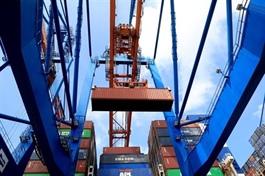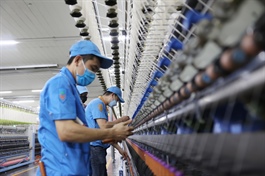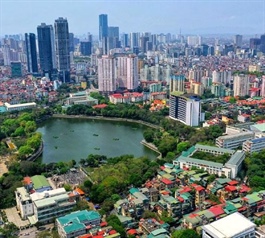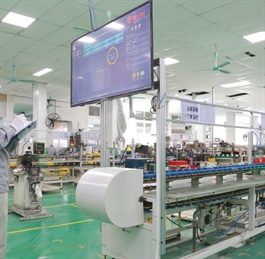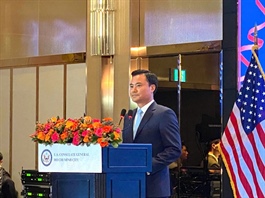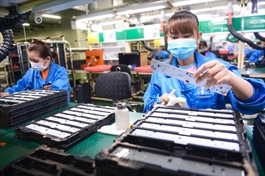Vietnam’s strategic infrastructure development projects attract Chinese investors
Vietnam’s strategic infrastructure development projects attract Chinese investors
China actively prioritizes infrastructure development and promotes global transportation cooperation, considering Vietnam as a crucial partner.
Leading Chinese enterprises are looking to increase their investments in Vietnam's strategic infrastructure systems, such as urban railways and high-speed rail.
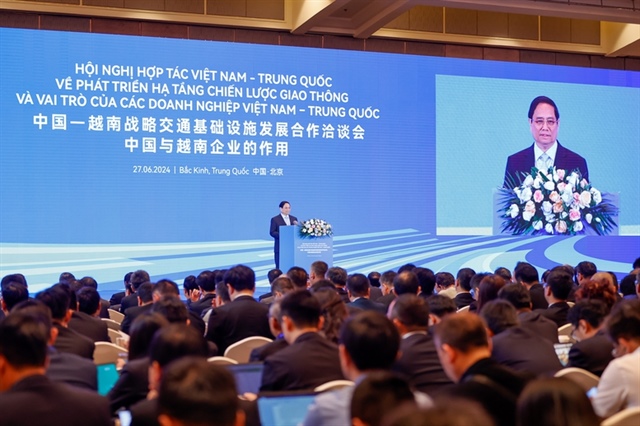
Prime Minister Pham Minh Chinh at the event. Photos: Nhat Bac/VGP |
The view was shared at the Vietnam-China cooperation conference on promoting strategic transport infrastructure and the role of businesses from both countries, which was attended by Prime Minister Pham Minh Chinh on June 27 in Beijing.
At the conference, China’s Vice Premier Zhang Guoqing quoted the Chinese proverb, "If you want to get rich, first build a road" to emphasize the direction of building a safe and sustainable transportation system. He highlighted that China prioritizes infrastructure development is actively promoting global transportation cooperation, and considers Vietnam as an important partner.
From a business perspective, Sun Yongcai, Chairman of the China Railway Construction Corporation (CRCC), envisioned a future where Vietnam would build a high-speed railway line as the main axis from Hanoi to Ho Chi Minh City, with rapid rail connections around this axis. Consequently, CRCC aims to collaborate and form joint ventures with Vietnamese partners to build and manufacture railway equipment, thereby strengthening the supply chain, he said.
He suggested that the two countries could select suitable systems or equipment to develop a supply chain right in Vietnam, thus supporting the formation of a local railway industry. Additionally, he emphasized that Vietnam should develop its railway system with sustainable goals, and improve operational and maintenance capacities.
"Only through open cooperation can we share opportunities. We are ready to work together in the railway and new energy sectors to advise Vietnam on building a modern railway system, contributing to a community with a shared future," Sun stated.
A senior executive of Huawei also expressed the company's desire to participate in the digitalization of transportation in Vietnam, considering the railway as a strategic national sector.
He mentioned that Huawei has been involved in developing numerous railway lines in Asia with wireless communication technology and smart digital integration in operations. According to him, digitalization will help build an intelligent railway system with safe operation and efficient maintenance.
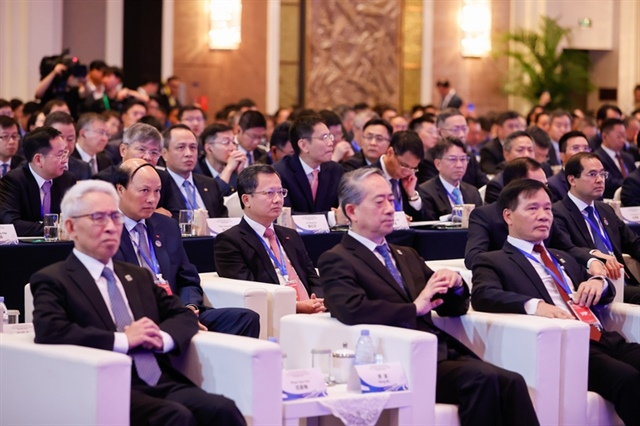
China’s Vice Premier Zhang Guoqing. |
Huawei’s representative added that besides applying advanced technology, digitalization in the railway sector should consider designing models to address specific problems and situations arising from the needs of the people. This approach would help businesses and authorities devise appropriate solutions for managing and operating transportation infrastructure, especially railways.
Regarding cooperation in strategic infrastructure construction, Minister of Transport Nguyen Van Thang stated that Vietnam's capital demand for transportation development from now until 2045 is significant.
For example, Vietnam needs about US$25 billion to develop over 9,000 km of highways. Of this, at least $15.3 billion is needed in capital from businesses, according to Thang.
Vietnam also requires around $204 billion to develop the national and urban railway networks in Hanoi and Ho Chi Minh City. Of this amount, the private capital from businesses is nearly $40 billion. This amount is expected to finance the upgrading of 7 existing railway lines with a total length of 2,440 km; and build 9 new railway lines with a total length of over 2,600 km, including the 1,545 km North-South high-speed railway and the over 175 km Ho Chi Minh City - Can Tho railway.

Delegates at the event. |
Thang also mentioned plans to invest in building 14 urban railway lines in Ho Chi Minh City (6 lines) and Hanoi (8 lines). "The Van Cao - Lang - Hoa Lac line in Hanoi is currently attracting investment under the PPP (public-private partnership) model with a capital requirement of around $2.5 billion," Thang informed.
Additionally, the capital requirements for developing port and aviation systems are approximately $4 billion and $785 million, respectively.
"Vietnam's capital needs for transportation are huge and diverse across all five transportation infrastructure sectors. This is a challenge for the Vietnamese Government and ministries but an opportunity for both Chinese and Vietnamese businesses," the Minister of Transport said.
Speaking at the conference, Prime Minister Pham Minh Chinh noted that Vietnam wants to cooperate in the construction of three railway lines connecting to China: Lao Cai - Hanoi - Haiphong, Lang Son - Hanoi, and Mong Cai - Ha Long - Haiphong.
He said that these three railway lines would help Vietnam connect with Central Asia and Europe through China and help China connect with ASEAN through Vietnam. These railways would contribute to reducing logistics costs, lowering product prices, increasing the competitiveness of goods, and creating livelihoods and socio-economic development for both countries.
"Vietnam's perspective is to focus on these three lines in the spirit of 'don't rush, ensure quality step by step.' Achieving this will complete the 'two corridors, one belt' framework in connection with the Belt and Road Initiative," he stated.

Senior officials from both sides at the event. |
Regarding urban railways, Vietnam also encourages Chinese businesses to invest in the PPP model. The government plans to instruct relevant agencies to research and propose an inter-governmental agreement for coordinating and implementing the three northern railway projects and then expand to other routes due to high demand, Chinh said.
He added that Vietnam would issue bonds and mobilize budget resources to develop transportation infrastructure. However, Chinh called on China to provide concessional loans and transfer railway technology, along with training personnel. For businesses from both countries, he urged stronger cooperation through joint ventures via BOT and PPP investments with the spirit of "harmonized benefits, shared risks, and mutual success."
"We need to adapt our approach, innovate our thinking, complete the planning, and develop specific proposals and projects to provide financial, management, and resource mobilization solutions, creating more symbolic projects for both countries," he concluded.
China is currently a powerhouse in transportation development, with over 6 million km of roads. The country also has a strong stance on prioritizing the environment and developing low-carbon projects; its goal is to develop an integrated transportation system combining road and maritime transport while promoting clean energy transportation equipment. China has developed 1.8 million electric vehicle charging stations on its highways, applying big data and artificial intelligence (AI) to the transportation sector.







